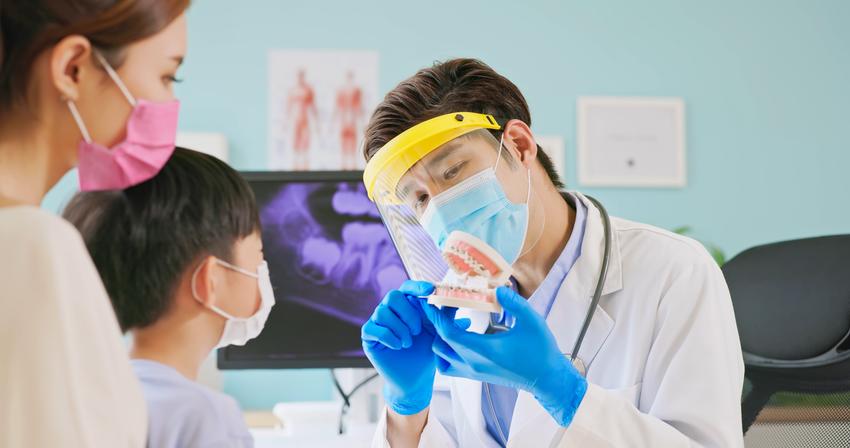Ensuring oral health access through literacy

Most people know that brushing their teeth is important–but for too many Americans, their understanding of oral health stops there. Priscilla Flynn, DrPH, MPH, RDH, has made it her professional mission to change that.
Flynn didn’t set out to study public health or educate the public. “When I began my career, I was most interested in biological factors contributing to diseases,” she said. But as she continued her studies, the problem of health inequity kept presenting itself to her. “I watched how people with comparable resources had very different health outcomes,” she said. That inspired her to dig deeper into “social determinants of health,” which “includes a wide set of abilities that result in being able to both prevent and find treatment for oral health issues.”
As an associate professor in the Division of Dental Hygiene, Flynn focuses on public health and oral health literacy. More than a simple connotation like learning to read, oral health literacy involves the ability to comprehend and make decisions around all aspects of the healthcare system, from care instructions to insurance to treatment planning and decision-making.
“Only about one third of Americans have what we consider ‘adequate’ oral health literacy,” Flynn explained. That’s a problem because of the strong impact that oral health literacy has on care. “Oral health literacy is the strongest predictor of oral health outcomes,” Flynn explained, “even more so than things we usually measure like educational level, age, race/ethnicity and other demographic factors.”
The solution is simple in concept and complex in execution: support patients in their understanding and agency when it comes to their oral health, and ensure providers are prepared to educate and empower their patients. Flynn has made those solutions a guiding light in her career.
Some studies have focused on providers’ understanding of oral health literacy, including a study of Wisconsin dental hygienists ten years ago. She found a lack of familiarity with oral health literacy, but an understanding of health behaviors and how they contributed to outcomes.
Since then, Flynn has explored the social determinants of health and oral health literacy among Somali refugees. “Most of my work was in Somali child care facilities, where we assessed clinical outcomes of mothers and their children with the mothers’ social determinants, beliefs, behaviors and literacy,” she explained. She and her team found that Somali children had the same number as or fewer cavities than US-born children, contrary to previous studies comparing refugee children to US-born children. “I think this shows a wide variation among cultures,” Flynn explained, reflecting on what she has learned about Somali families’ diets and their relationship with healthier foods.
Flynn’s work with the Somali population actually goes back as far as her dissertation, inspired by a prenatal care program she found that incorrectly assumed Somali women would have poorer pregnancy outcomes. “During this process, I met a lot of Somali women who I grew to admire and respect,” she explained. That focus continued as she began collaborating with a Somali-born dentist “who was passionate about addressing the oral health of people in his community” at the University of Minnesota.
Though she hoped to continue her studies of Somali refugees and learn more about the protective factors of their diets, federal funding priorities and the Covid-19 pandemic have delayed her from pursuing that path. As she looks toward retirement, Flynn has turned her lens toward a specific kind of literacy: vaccination for HPV. “I’d like to see the legislature enact legislation to allow dental providers to administer the HPV vaccine in dental practices,” she explained. “Since the HPV vaccine consists of two doses, six months apart, it falls beautifully within the recall period for preventive appointments.”
Though the foci of her studies have varied throughout the years, one thing is clear: for Flynn, public understanding of the importance of oral health is crucial. “Oral health literacy is not an easy fix, like learning to read,” she said, “but there is a strong association between the overall level of oral health literacy and outcomes, including cavities and gum disease.”
